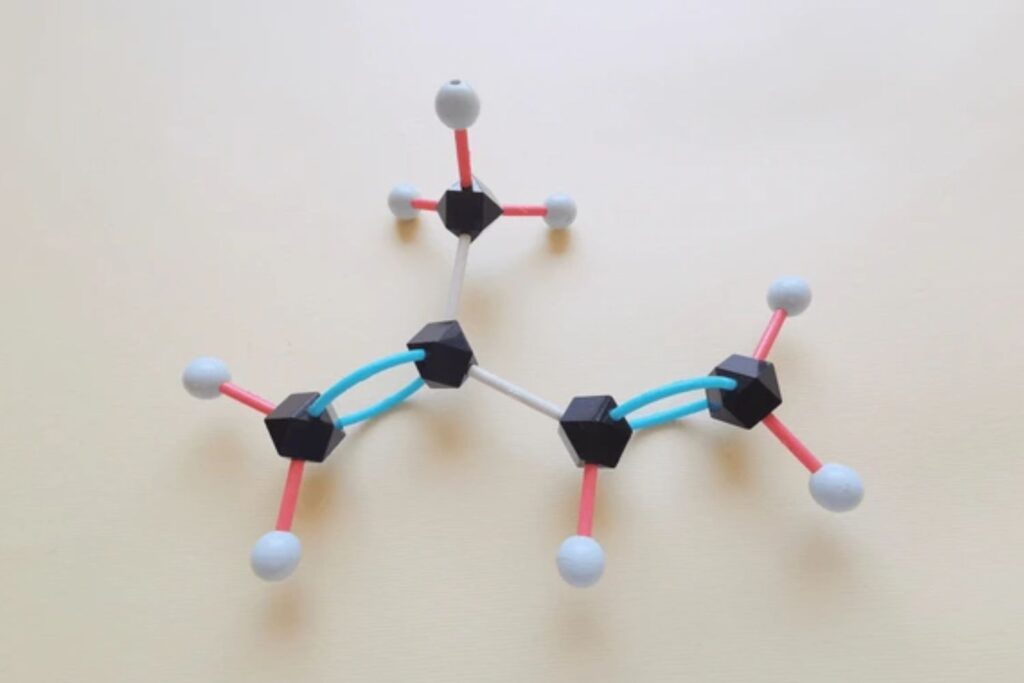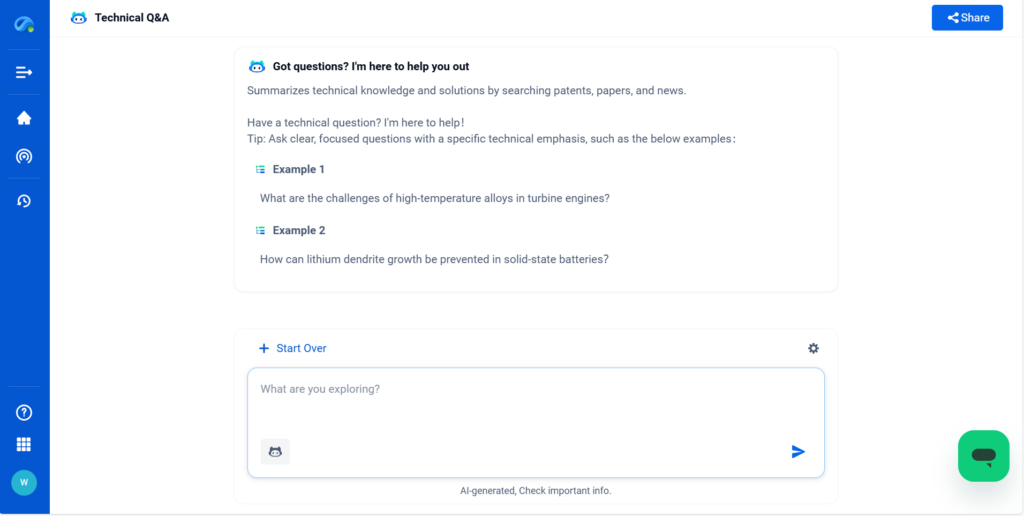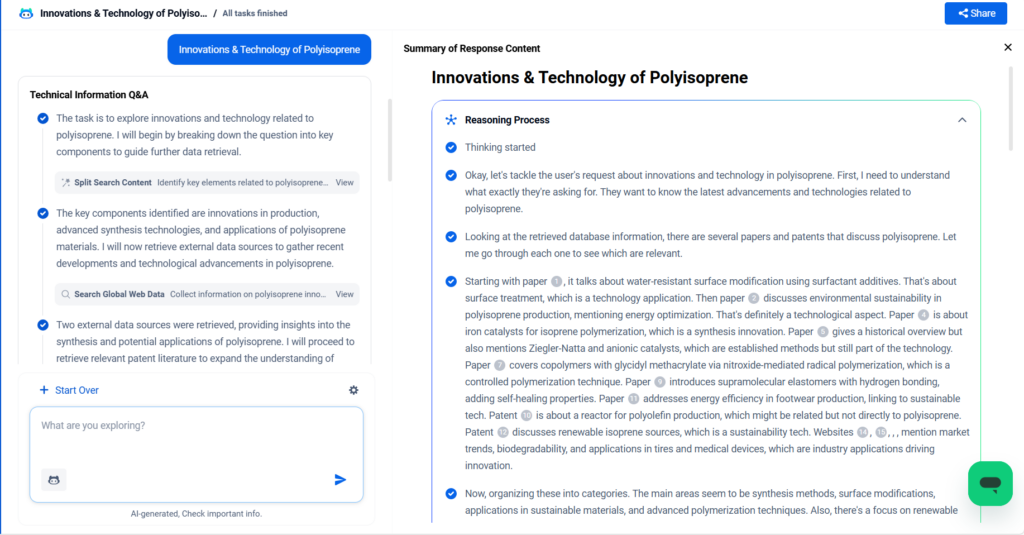
Polyisoprene, a synthetic or natural polymer of isoprene (C₅H₈), is prized for its rubber-like elasticity and low hysteresis. As a high-performance elastomer, polyisoprene offers outstanding tensile strength, tear resistance, and fatigue durability—making it a critical material for applications where flexibility and reliability are non-negotiable. Industries such as automotive, medical devices, consumer goods, and emerging bio-based technologies continue to push the boundaries of polyisoprene’s capabilities. This blog explores the composition, grades, key properties, and evolving applications of polyisoprene, with insights tailored for engineers, procurement specialists, and material developers through PatSnap Eureka AI Agent.
Material Composition and Grade Data
Polyisoprene exists in two main forms: natural rubber (NR) and synthetic polyisoprene (IR). While both share similar chemical structures, synthetic IR offers controlled microstructure and purity levels critical in regulated applications.
Molecular Structure:
- Repeating Unit: –[CH₂–C(CH₃)=CH–CH₂]–
- Configuration: Predominantly cis-1,4 (for high elasticity)
Key Commercial Grades:
| Grade | Supplier | Form | Typical Use | Notable Properties |
|---|---|---|---|---|
| IR2200 | Goodyear Chemical | Synthetic IR | Tires, automotive mounts | High green strength, fast cure rate |
| NATSYN 2200 | ExxonMobil | Synthetic IR | Surgical gloves, baby bottle nipples | Ultra-high purity, medical compliance |
| SKI-3S | Sibur | Synthetic IR | Seismic isolators, heavy-load bushings | Excellent dynamic fatigue resistance |
| TSR 10 / TSR 20 | Various NR producers | Natural rubber | General engineering & footwear | Excellent elasticity, variable impurity |
Synthetic grades offer better batch-to-batch consistency, are free from biological contaminants, and show superior aging stability when compared to NR.
Key Properties That Define Polyisoprene
Polyisoprene’s mechanical resilience and molecular flexibility allow it to serve as an ideal elastomer across load-bearing and cyclic stress conditions.
- Tensile Strength: 20–25 MPa (varies by grade & filler content)
- Elongation at Break: > 700%
- Tear Strength: 30–70 kN/m
- Hardness (Shore A): Typically 30–50
- Compression Set: Low, especially in synthetic grades
- Thermal Range: -50°C to +90°C (dry applications)
- Biocompatibility: NATSYN and select IR grades are USP Class VI compliant

Core Applications Across Industries
Automotive and Tire Manufacturing
Polyisoprene plays a pivotal role in the automotive sector, especially in tire manufacturing, where both natural and synthetic forms are used extensively. Synthetic polyisoprene (IR), with a controlled cis-1,4 structure similar to natural rubber, offers superior uniformity and consistent properties. It is widely employed in high-performance tires, racing tires, and inner tubes due to its excellent resilience, low rolling resistance, and high tear strength. Bridgestone’s IR2200 and Goodyear’s NATSYN 2200 are prominent examples that exhibit consistent molecular weight distribution and high purity, enhancing durability under dynamic stress. In automotive suspension components, seals, and engine mounts, polyisoprene provides critical vibration damping and heat resistance performance.
Medical and Healthcare Devices
In the medical field, polyisoprene’s low protein content and high biocompatibility make it a leading alternative to natural latex. It is extensively used in the manufacture of surgical gloves, catheters, IV tubing, and condoms, offering comparable elasticity without the risk of Type I latex allergies. Grades like KRATON IR0307 (a medical-grade polyisoprene elastomer) are tailored for cleanroom processing and sterilization resistance. Its purity and ease of vulcanization also make polyisoprene suitable for custom-molded components used in diagnostic devices and drug delivery systems.
Consumer Products and Wearables
Polyisoprene’s softness, elasticity, and durability make it a material of choice for high-end consumer products such as sports mouthguards, fitness bands, swim caps, and cushioning insoles. In wearable devices, it serves as a hypoallergenic alternative to silicone rubber, with enhanced comfort for skin-contact applications. Brands like Teknor Apex and Kuraray supply IR elastomers used in premium consumer-grade wearables, where comfort and long-term mechanical integrity are critical.
Electronics and Electrical Insulation
The use of polyisoprene in electronics is growing, particularly in insulation sleeves, anti-vibration mounts, and flexible cable jacketing. Its superior dielectric properties and mechanical resilience under cyclic loading make it ideal for protecting delicate electronic components from shock, moisture, and environmental exposure. Modified polyisoprene grades are being explored for EMI shielding and low-voltage insulation in emerging wearable tech and e-textile markets.
Industrial and Construction Applications
In industrial settings, polyisoprene is commonly used for mechanical dampers, gaskets, conveyor belts, and hoses due to its high tensile strength and fatigue resistance. Construction-grade IR materials are tailored for dynamic joints, expansion seals, and flooring applications, where long-term elasticity and resistance to environmental degradation are essential. Blends with other elastomers like styrene-butadiene rubber (SBR) and butyl rubber are also used to optimize durability under fluctuating temperature and load conditions.
Emerging Use in Sustainable and Bio-Based Products
As industries shift toward sustainability, polyisoprene—especially its natural form—is gaining traction in renewable product lines. Bio-based synthetic polyisoprene derived from microbial fermentation (e.g., using Escherichia coli engineered to produce isoprene monomers) is being commercialized for eco-friendly tires, packaging foams, and biodegradable elastomer products. Companies like Genomatica and Michelin are spearheading these innovations, targeting full lifecycle carbon reduction without compromising performance.
How Polyisoprene Compares to Similar Materials
| Property | Polyisoprene | Natural Rubber (NR) | EPDM | Silicone Rubber |
|---|---|---|---|---|
| Tensile Strength | High (20–25 MPa) | Comparable (18–24 MPa) | Moderate (10–15 MPa) | Moderate (5–10 MPa) |
| Thermal Resistance | Moderate (~90°C) | Moderate (~80°C) | High (~150°C) | Very High (~250°C) |
| Aging Resistance | Good (especially IR) | Poor (oxidizes easily) | Excellent | Excellent |
| Biocompatibility | Excellent (in IR grades) | Poor (latex allergens) | Limited | Excellent |
| Cost | Moderate to High | Low to Moderate | Moderate | High |
➤ In contrast to NR, synthetic IR eliminates allergen risk and provides better heat aging resistance. Compared to EPDM or silicone, it offers better elasticity but limited high-temp tolerance.
Innovations & Emerging Technologies in Polyisoprene
Recent advancements in polyisoprene research have significantly enhanced its performance, processing efficiency, and sustainability profile. These innovations span across bio-based synthesis routes, nanocomposite reinforcement, 3D printing compatibility, and smart elastomer integration, reshaping its industrial relevance in both traditional and emerging sectors.
1. Bio-Based Polyisoprene Production
The shift toward sustainable elastomers has driven extensive research into microbial and enzymatic synthesis of polyisoprene. Companies like Goodyear and Bridgestone have pioneered biosynthetic isoprene using genetically engineered strains of E. coli and Bacillus, enabling production of renewable polyisoprene that mimics the microstructure of natural rubber. These approaches not only reduce dependence on petroleum-based feedstocks but also align with green chemistry and circular economy principles.
2. Nanocomposite Reinforcement for Mechanical Enhancement
Researchers have developed polyisoprene-based nanocomposites incorporating materials such as graphene oxide, carbon nanotubes, and silica nanoparticles. These nanofillers significantly improve tensile strength, abrasion resistance, and thermal conductivity. For instance, studies show that incorporating 3–5 wt% graphene oxide into polyisoprene matrices can enhance Young’s modulus by over 40%, with minimal compromise to elasticity—a major breakthrough for high-performance automotive and aerospace seals.
3. Additive Manufacturing & Polyisoprene-Based Inks
With the growing demand for elastomeric 3D printing, modified polyisoprene formulations are being explored as printable feedstocks in direct ink writing (DIW) and vat photopolymerization systems. Tailored oligomeric polyisoprenes with reactive end groups allow UV-curable elastomer printing, ideal for custom biomedical implants, soft robotics, and flexible electronics. This innovation bridges the gap between rubber elasticity and digital manufacturing.
4. Functionalized Polyisoprenes for Responsive Applications
Advanced surface chemistry has enabled functionalization of polyisoprene chains with ionic, thermoresponsive, or self-healing moieties. These smart elastomers are suitable for stimuli-responsive sensors, wearable biomedical devices, and energy harvesting systems. For example, ionic liquid-infused polyisoprene membranes exhibit both elasticity and ionic conductivity, suitable for flexible supercapacitor applications.
5. Crosslinking Innovations & Radiation Curing
To overcome oxidative degradation and temperature instability, non-sulfur vulcanization techniques—including peroxide curing and electron-beam crosslinking—have gained traction. These methods offer faster processing, cleaner crosslinking, and better biocompatibility for medical applications such as surgical tubing and gloves, while also extending the shelf life of industrial rubber components.

Challenges and What’s Next for Polyisoprene
Despite its elasticity and versatility, polyisoprene faces challenges that researchers and manufacturers continue to address:
Key Challenges:
- Thermal degradation beyond 100°C limits use in under-hood and industrial applications
- Environmental aging (ozone, UV) necessitates antioxidant stabilization
- Non-polarity restricts compatibility with polar fillers or functional additives
Future Outlook:
- Recyclable elastomeric formulations for circular manufacturing
- Functionalized polyisoprene copolymers for smart drug delivery
- Advanced nanocomposite systems to balance mechanical and environmental performance
Conclusion
Polyisoprene continues to evolve as a high-performance elastomer bridging legacy applications and frontier technologies—from surgical gloves to bio-based consumer goods. Its versatility stems from intrinsic elasticity, processability, and chemical tunability across grades. For engineers, sourcing experts, and R&D teams, polyisoprene offers a reliable, adaptable, and increasingly sustainable choice.
FAQs
No. While both share the same polymer backbone (cis-1,4 polyisoprene), synthetic polyisoprene offers greater consistency, purity, and aging resistance.
Synthetic IR grades like NATSYN 2200 are protein-free, have ultra-low extractables, and meet USP Class VI and ISO 10993 standards, making them ideal for gloves and device components.
Typically, no. Standard IR materials degrade above 90–100°C. However, peroxide-cured or filled systems may extend usable thermal ranges.
Bio-based polyisoprene sourced from renewable feedstocks—such as BioIsoprene—offers a lower-carbon alternative while retaining conventional IR performance.
Synthetic polyisoprene exhibits exceptional fatigue resistance, making it ideal for dynamic sealing systems, vibration isolation, and repetitive load components.




